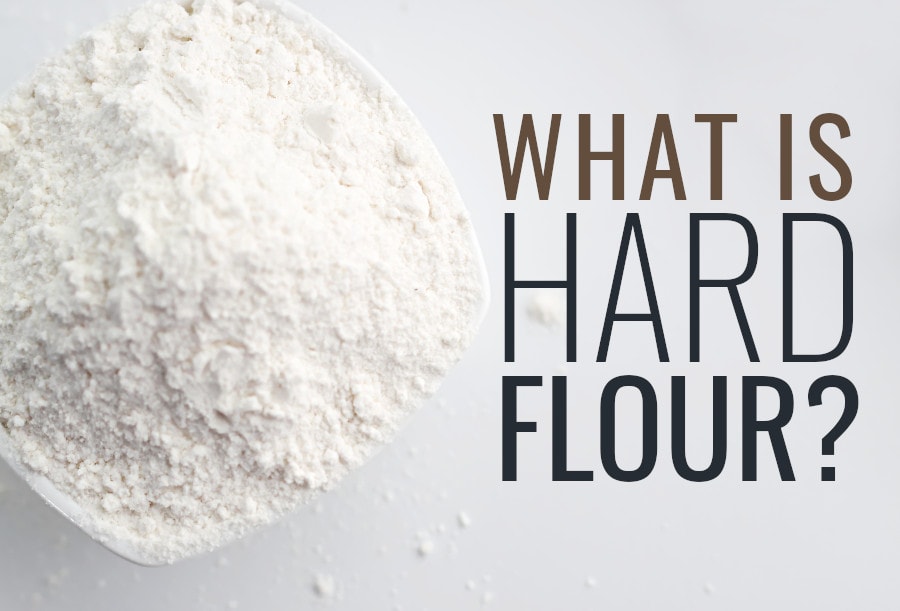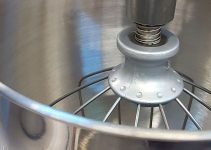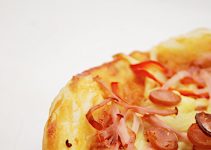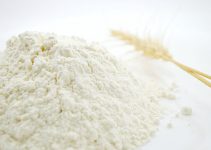There’s a very short answer to the question what is hard flour. Hard flour is also known as bread flour.
Contents
Two Types of Bread (Hard) Flour
- white – it should actually be called whole white wheat flour because it’s made from hard white wheat
- whole wheat – it actually gets its distinct color because it’s milled from the whole grain of hard red wheat
Another interesting fact about whole wheat is that it’s the lowest calorie flour, as well. I was already aware of how healthy it is, although I’m not exactly the biggest fan, but it was interesting to discover that it was low in calories, as well.
Actually, white flour is most commonly known as bread flour because it’s the most used for making breads.
Whole wheat is not what people automatically think of when the words bread flour are mentioned.
Hard Flour Top Picks
1. White: Bob’s Red Mill Organic Unbleached White Flour
This Bob’s Red Mill is one of the best white bread flours. It has all the needed characteristics: the only ingredient is organic hard red wheat, it has a high protein content, it’s unbleached, unbromated, and organic. For a cheaper but just as awesome option, I recommend the King Arthur Unbleached Bread Flour. As you can see, unbleached is the word to look for firs. Then, you can check the ingredients and that’s about it.
2. Whole Wheat: Bob’s Red Mill Whole Wheat Flour
The only ingredients used for making this whole wheat is whole grain hard red wheat. That’s how it should and why this option is one of the best. An awesome alternative is the Great River Organic Milling, Organic Whole Wheat Bread Flour in case organic is what you want.
What Is It Characterized By?

Hard flour has a higher protein content. That’s why we also call it strong flour.
I believe that some of the most frequently encountered words in the world of baking are white, whole wheat, and all purpose.
To give you a perspective on the higher protein content, let’s compare it to all purpose.
On average, hard flour has 11-13% protein content.
It can even go as high as 14% or 15% protein content for the whole wheat but we’re talking about average percentages here, it depends from manufacturer to manufacturer.
Also on average, all purpose can have between 10% and 12% protein content. It has a quite high protein content because it’s actually a mix of soft and hard flour. This blend is the reason why it can be used for making bread as well as cakes and pastries. It’s quite versatile and definitely a must-have in my house.
The proteins form gluten, after being mixed with water and yeast. Gluten is what holds the dough together, gives elasticity, allows the dough to maintain its shape, to trap the carbon dioxide inside when the dough starts to rise.
When there’s a high protein content more gluten is produced.
Hard Flour Substitutes
The numbers might not seem that impressive and there doesn’t seem to be such a huge difference between hard flour and all purpose. And I have to agree with you on that.
It’s actually why we can easily replace all purpose with white flour and vice versa and still get awesome delicious baked goods.
Well,
Whole wheat is in another category by itself because it doesn’t only have a very high protein content but a completely different taste and texture.
In recipes, whole wheat is usually combined with all purpose or white because it’s too dense to be used on its own.
It is why you can substitute some of the white or all purpose with whole wheat if you want to slowly adapt to incorporating whole wheat flours into your diet.
You can start off by substituting just 25% and you won’t notice that much of a difference, not in terms of taste, texture, and even color.
If you substitute more, be aware of two things:
- whole wheat weighs less than white – a substitution by volume not by weight is better (measure by cups)
- whole wheat absorbs more liquid
What Is It Used For?
We associate it with baked goods made with yeast.
That means all kinds of breads, pizza, bagels, rolls, buns.
It’s not used for making quick breads, biscuits, pies, pastries, cakes, or any other type of desserts. All purpose or cake flour are the ones mentioned by such recipe.
Cake and pastry are what we call soft flours because they are milled from soft wheat, their protein content is below 10%. All purpose can serve as a good substitute in these recipes.
The low protein content is preferred for cakes and pastries because they don’t require an elastic dough.
The easy thing about figuring which type of flour you need is that you don’t actually need to figure it out because the recipes specify exactly which type should be used.
And that’s my complete answer to the question what is hard flour, as you can see, it’s a very simple answer, this part about baking ingredients is simple.




